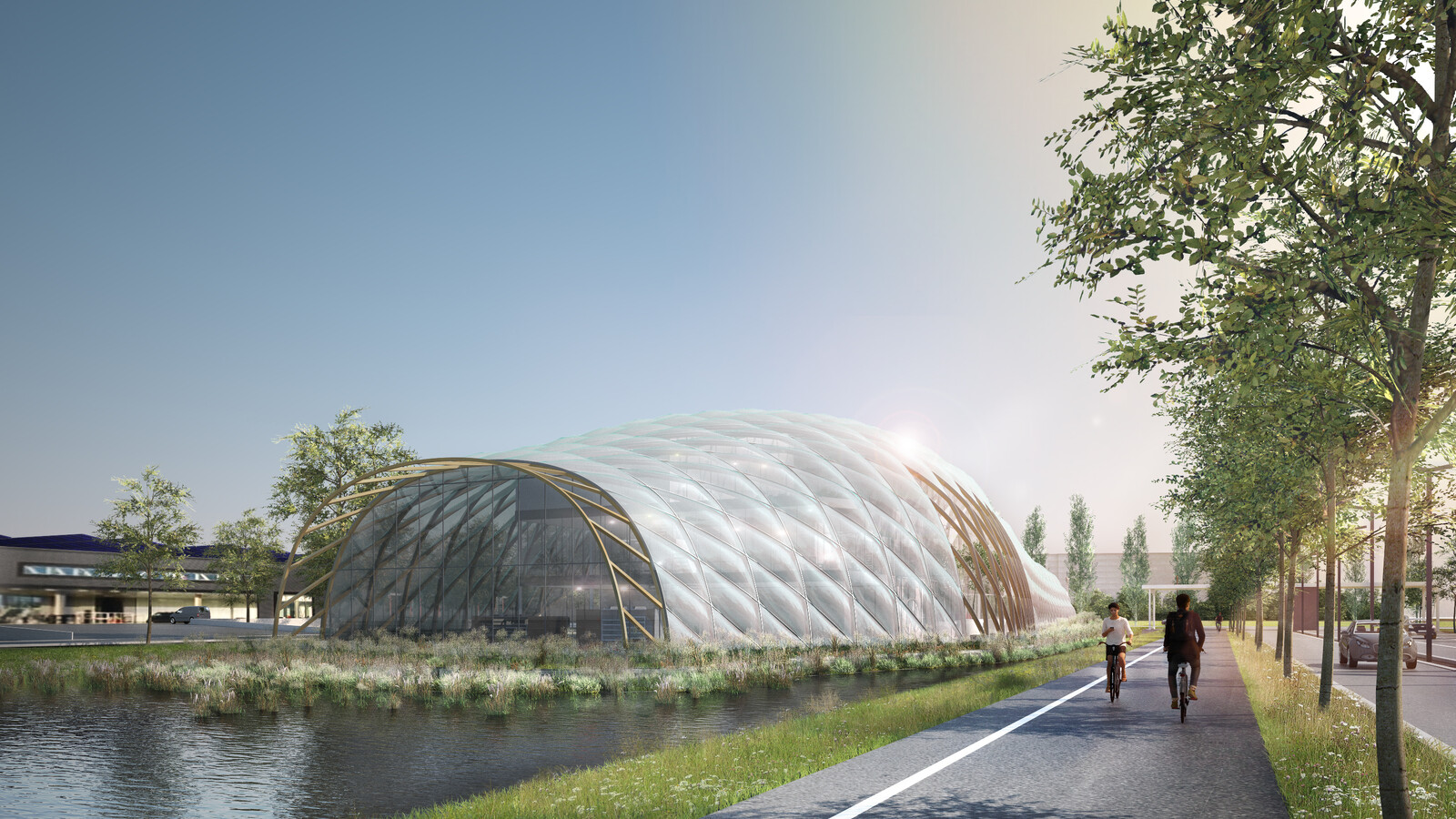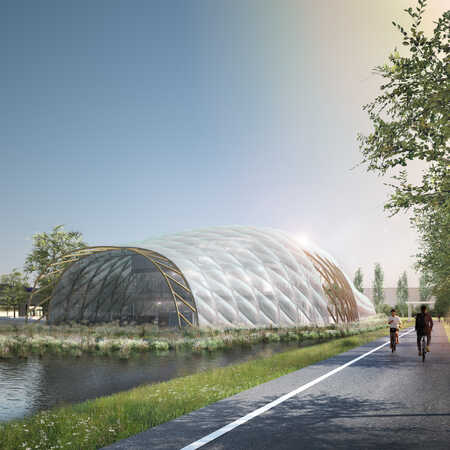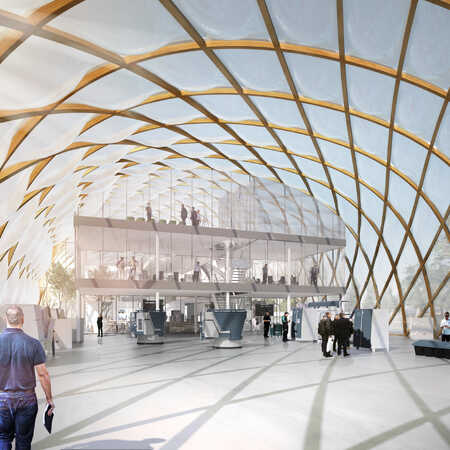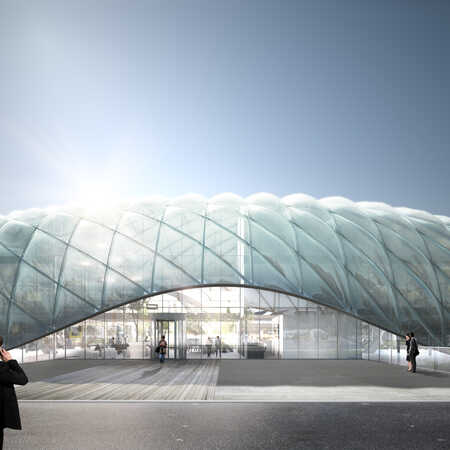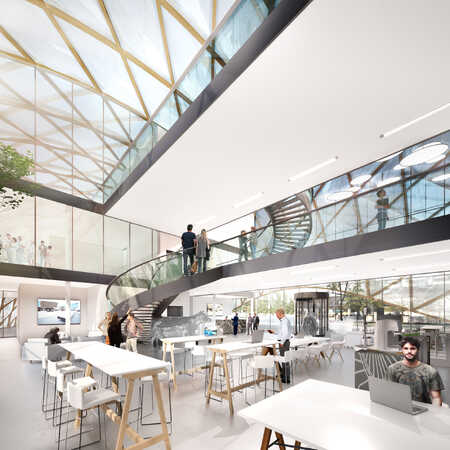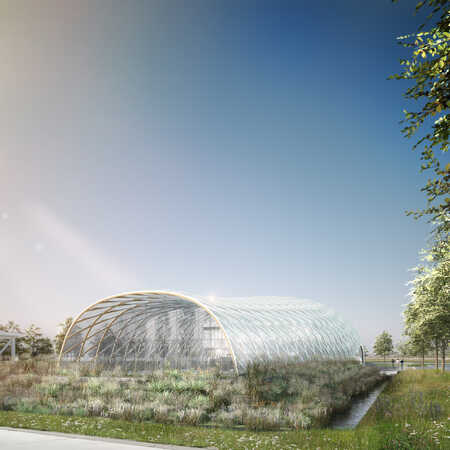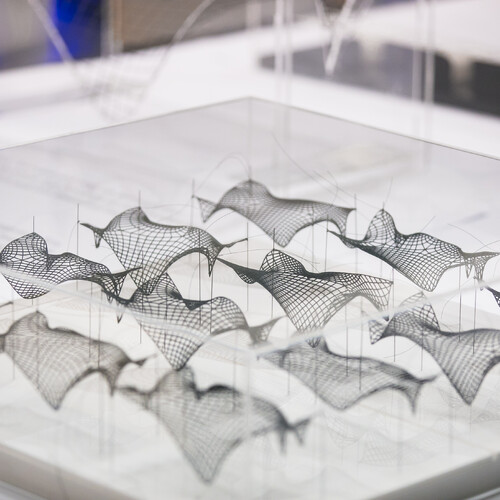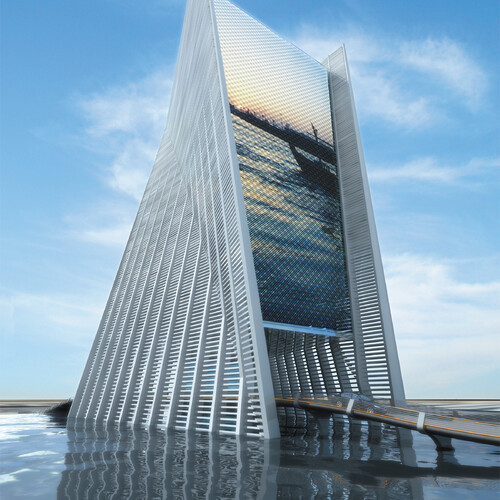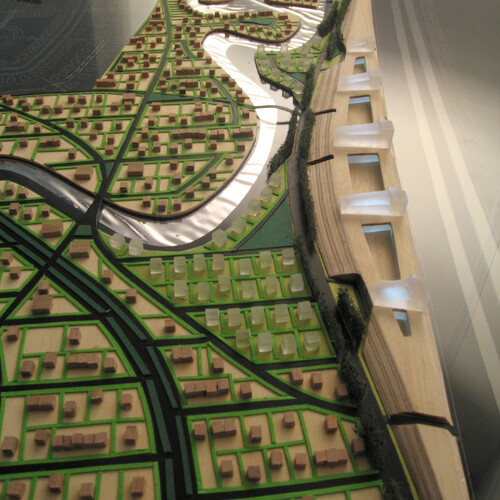Design competition Training Centre
The majority of work undertaken by the architectural studio ZJA serves a public function, like bridges, stadiums, stations and motorway intersections. Occasionally a private party may hold a design competition that is of interest to ZJA, for example when that design offers an opportunity to further explore our own vision and innovative ideas.
That was the case with the competition seeking designs for a new training centre, a building to share knowledge and train employees.
An ambitious design
The design of the trainings centre would not only have to present a striking image but would have to be ambitious in all aspects. ZJA developed a design that is functional and sustainable, inviting and pleasant to stay in. But most of all it is a landmark that in its appearance, concept and detailing expresses the spirit of the company: that of a visionary inventor, an inventive developer and a dynamic entrepreneur.
ZJA’s design for the trainings centre is provocatively positioned in a pond and has an organic, flowing shape. Its roof is a vault consisting of a warped grid of wooden trusses, outfitted with transparent EFTE cushions. This creates a large space without columns housing two big workshops, a lobby, a staircase and two floors for classrooms, toilets and technical spaces. The design is sustainable in many aspects: because of its use of energy, because of the applied material and constructive method, but also for its extreme flexibility.
Origen of the design
The first thing ZJA did was to translate the program of requirements listing the required functions, dimensions and surfaces into mathematical terms. In other words, a model was created that described the spatial and functional relationships between the desired elements of the design, as a coherent system and considering the differences in building material that could be chosen. This is called the parametric model.
Computational design means working with algorithms that subsequently generate all conceivable architectural appearances based on this set of requirements. How to choose from such an extensive collection of possibilities? ZJA defined an organizing principle prioritizing a column free interior space, flexibility in the short and the long term and sustainability. This is the script that guides the algorithms. In this case the script produced an extensive cloud of versions out of which ZJA chose the best one. Imagine the DNA of the species ‘horse’ producing a large variety of different individual horses.
The significant advantage of this design process is that consulting with clients or changing circumstances translate into optimal adaptations without too much extra work
Light and sustainable
As much free space as possible with a minimum of material, that is the question that led to the elongated dome structure constructed from a grid of beams. This extremely light construction is only possible due to the combination of this stunning and smart shape and the choice of materials. The warped grid of wooden trusses is filled with air cushions made of transparent ETFE foil. Light travels through them as easily as through glass, but they are thirty times lighter. Their insulation performance is equal to that of glass and they need no cleaning as the low surface tension makes sure that rain removes any pollution. Integrated layers enable adaptable sun shading for those part of the grid shell that are the most exposed to the sun, and so prevent glare and overheating.
Under the wooden grid shell, in the middle, the stack of floors are the only element resting on columns. This whole steel construction is detachable, and adaptable in shape and size, whenever a different lay out is required in the future.
Sustainability in this design does not only refer to the energy saving aspects, or to how rainwater is used for cooling, how drainage is filtered, and the surrounding water of the pond stimulated to become a vital biotope. It also refers to the flexible and detachable construction, the circular qualities of the wood and completely recyclable ETFE foil.
The truism that the most efficient and functional buildings always tend to be rectangular boxes is out of date. Thanks to the application of new materials, innovative constructive principles and the use of new designing software it is possible to build functional, light and sustainable buildings and still enjoy a huge freedom to shape and express. ZJA’s design for the training centre is a striking example of this.
Architect: ZJA
Design competition: 2019
Project: #1178
